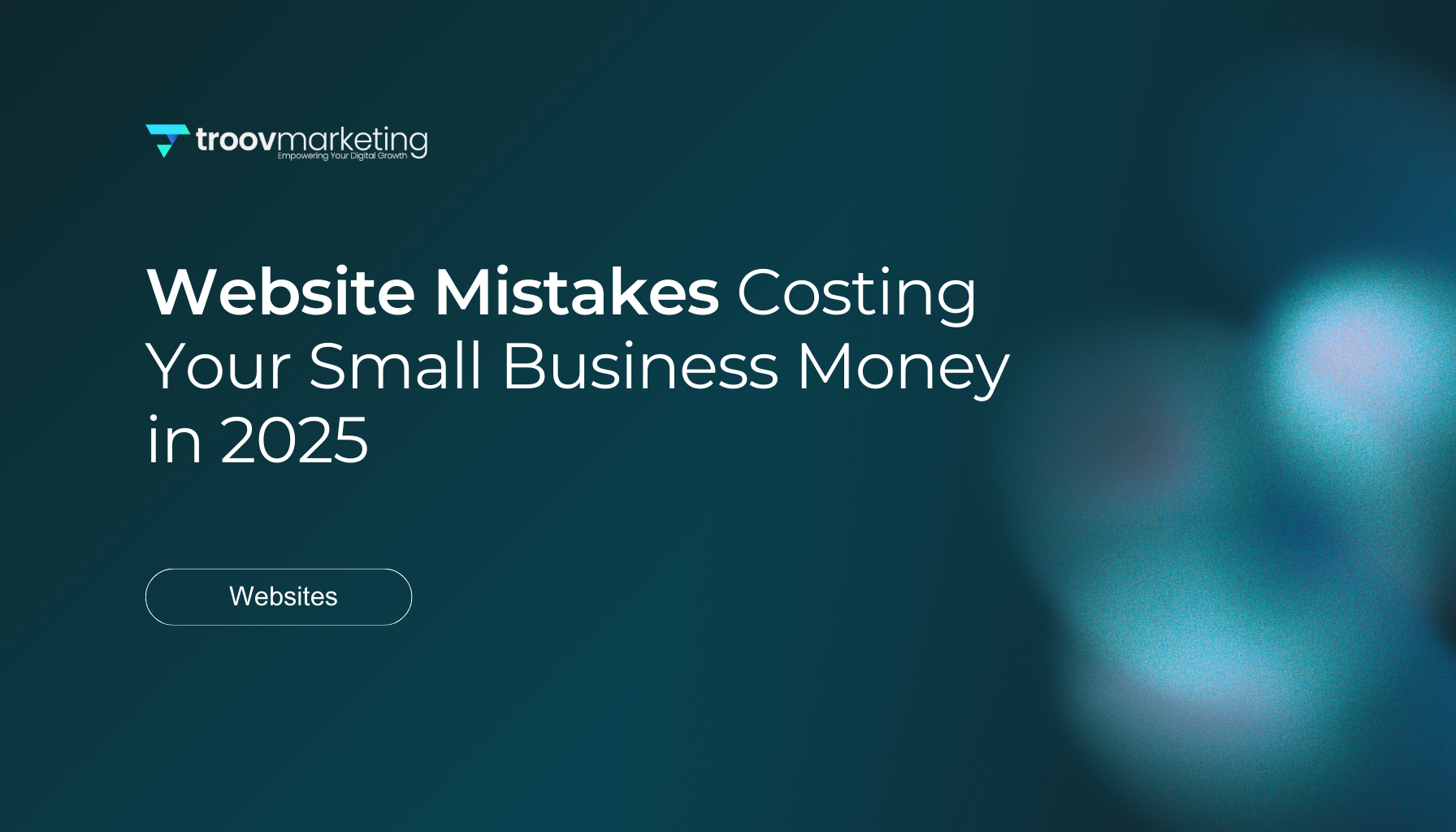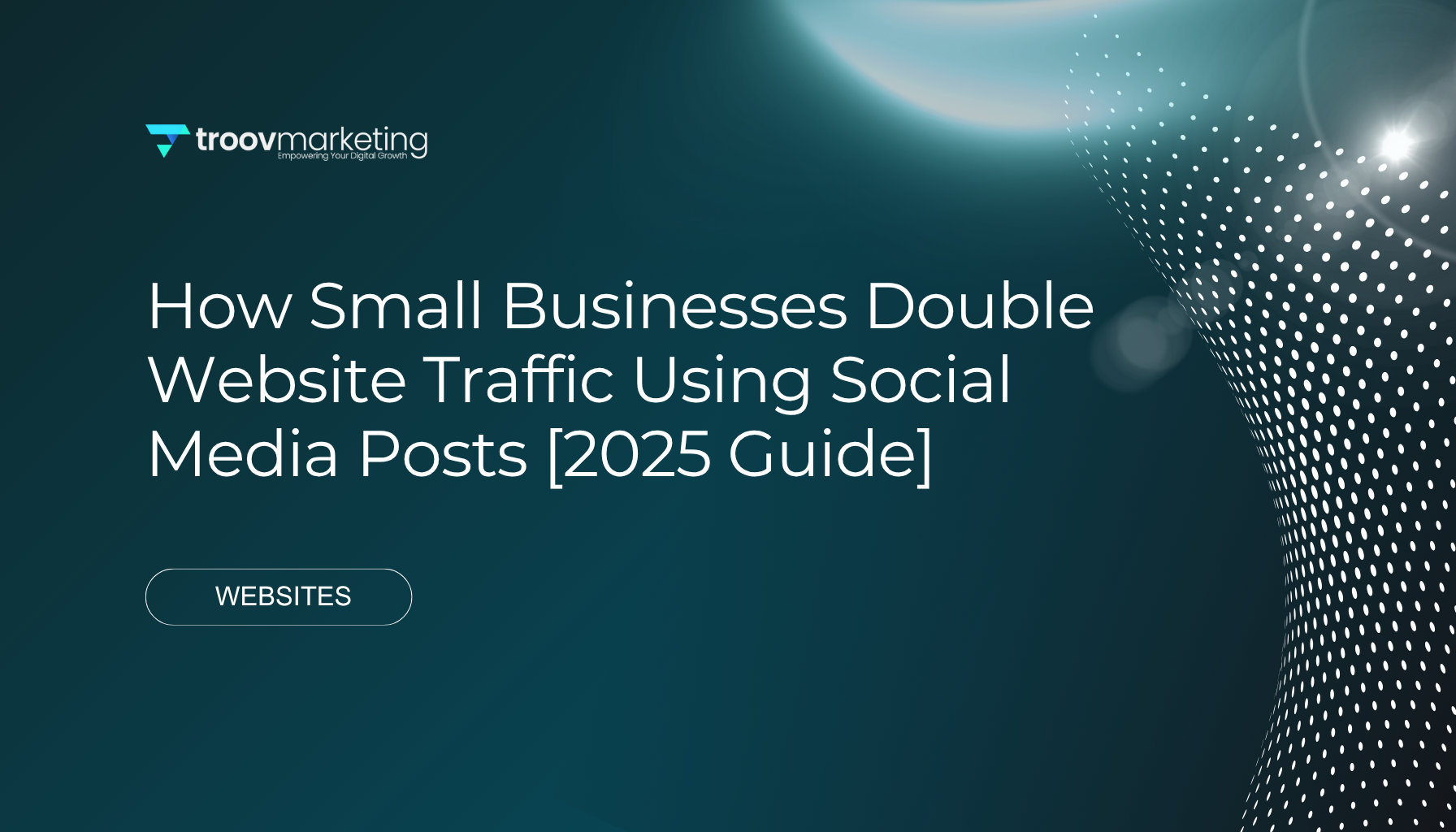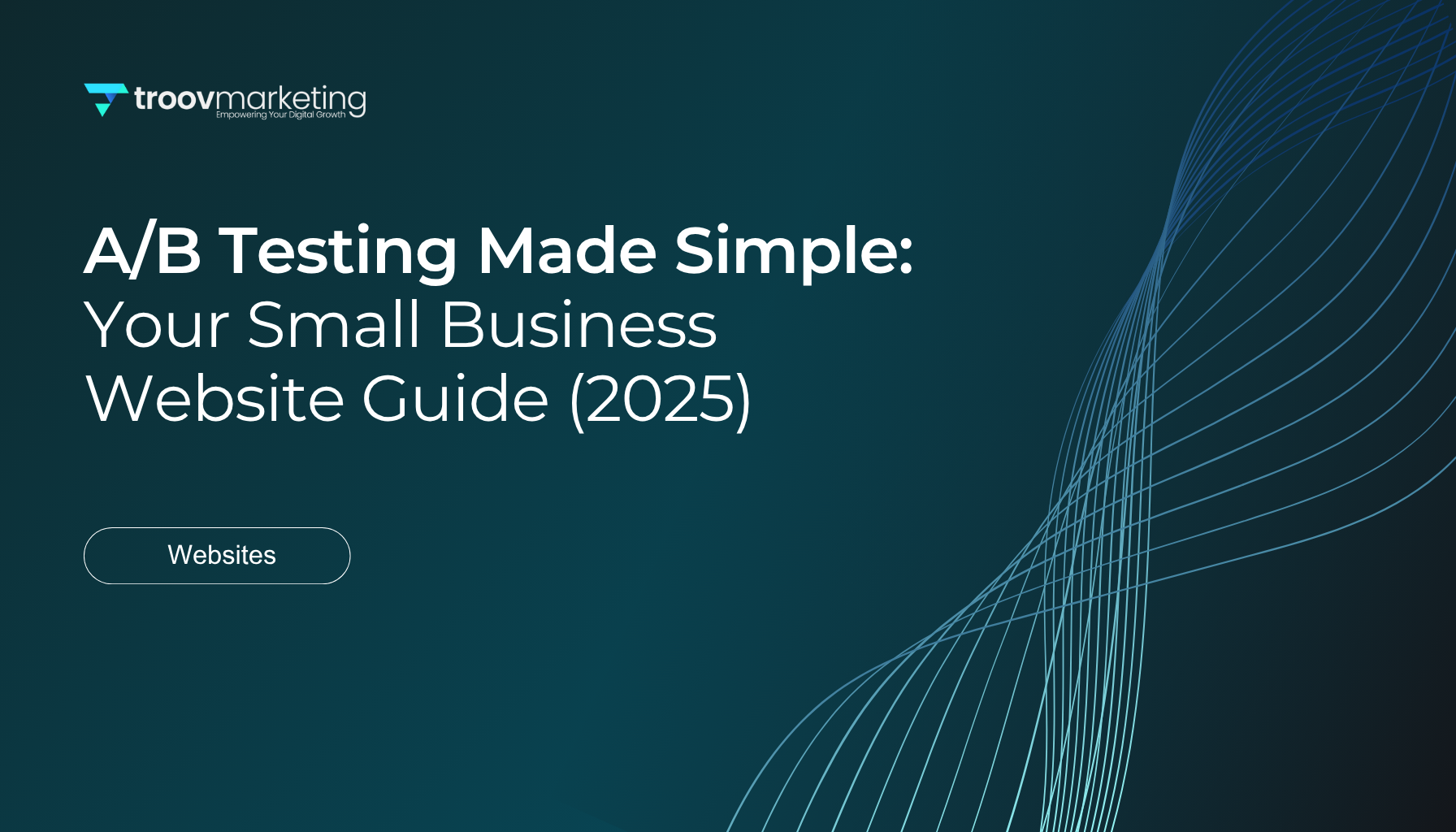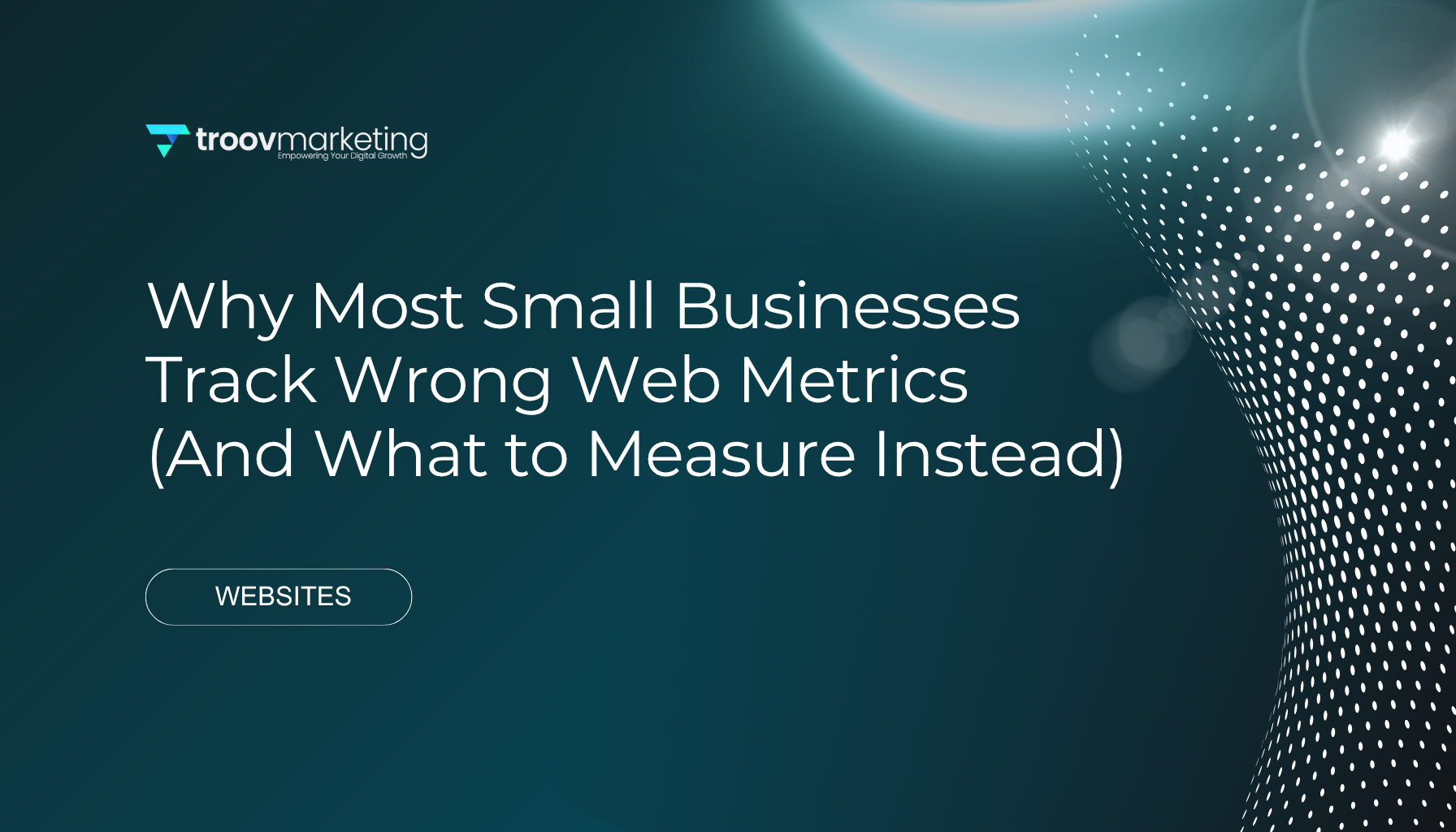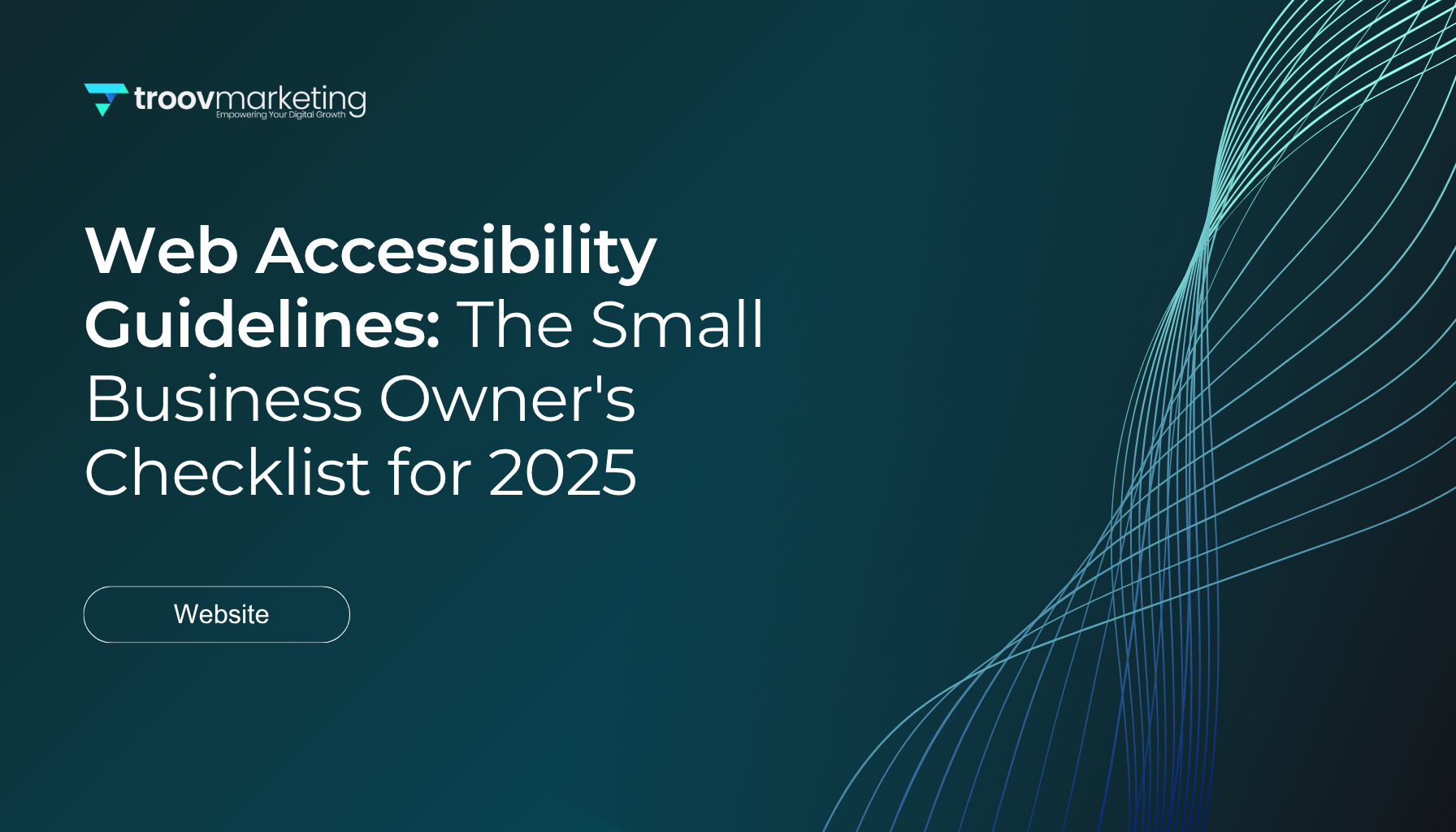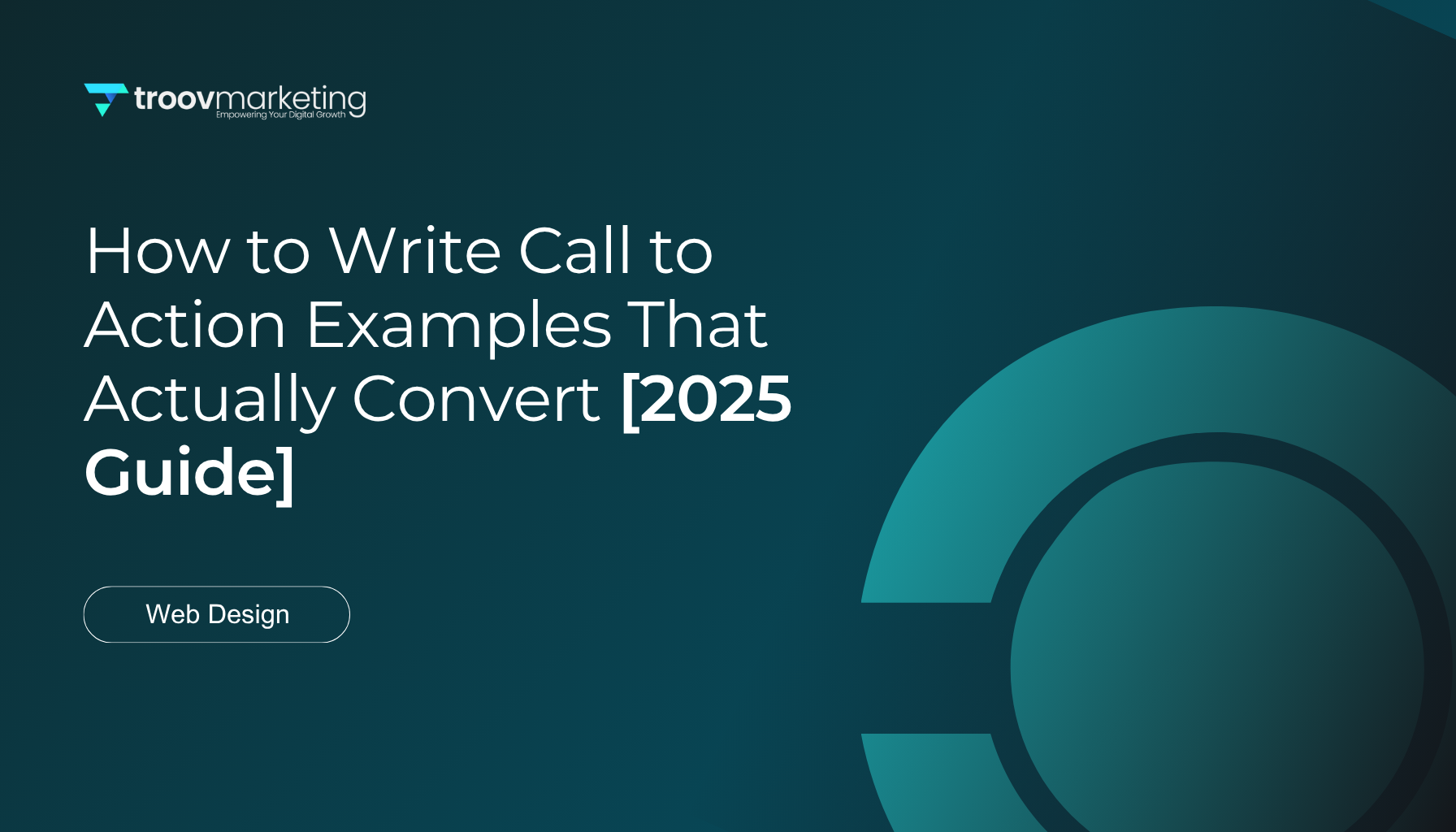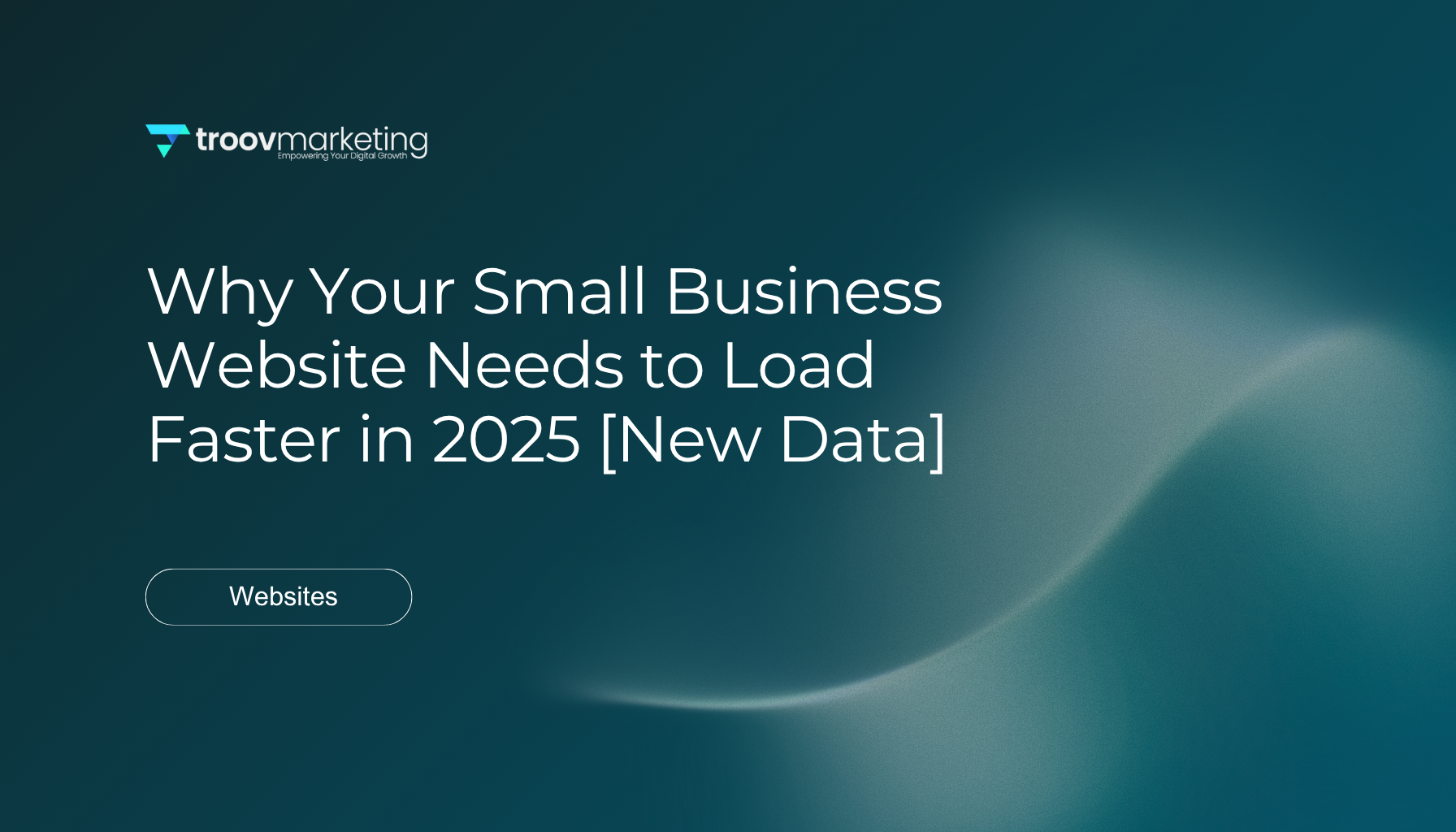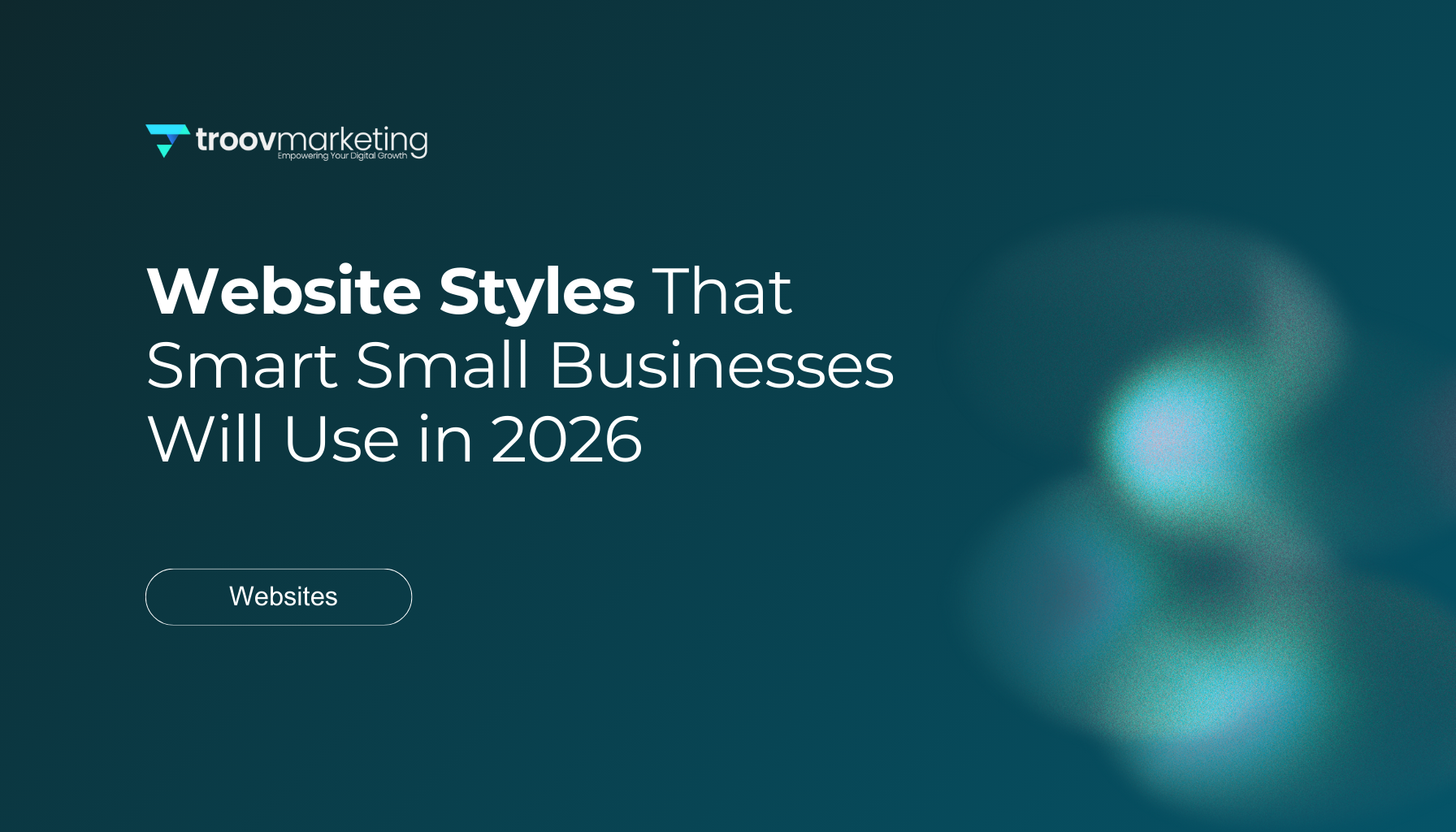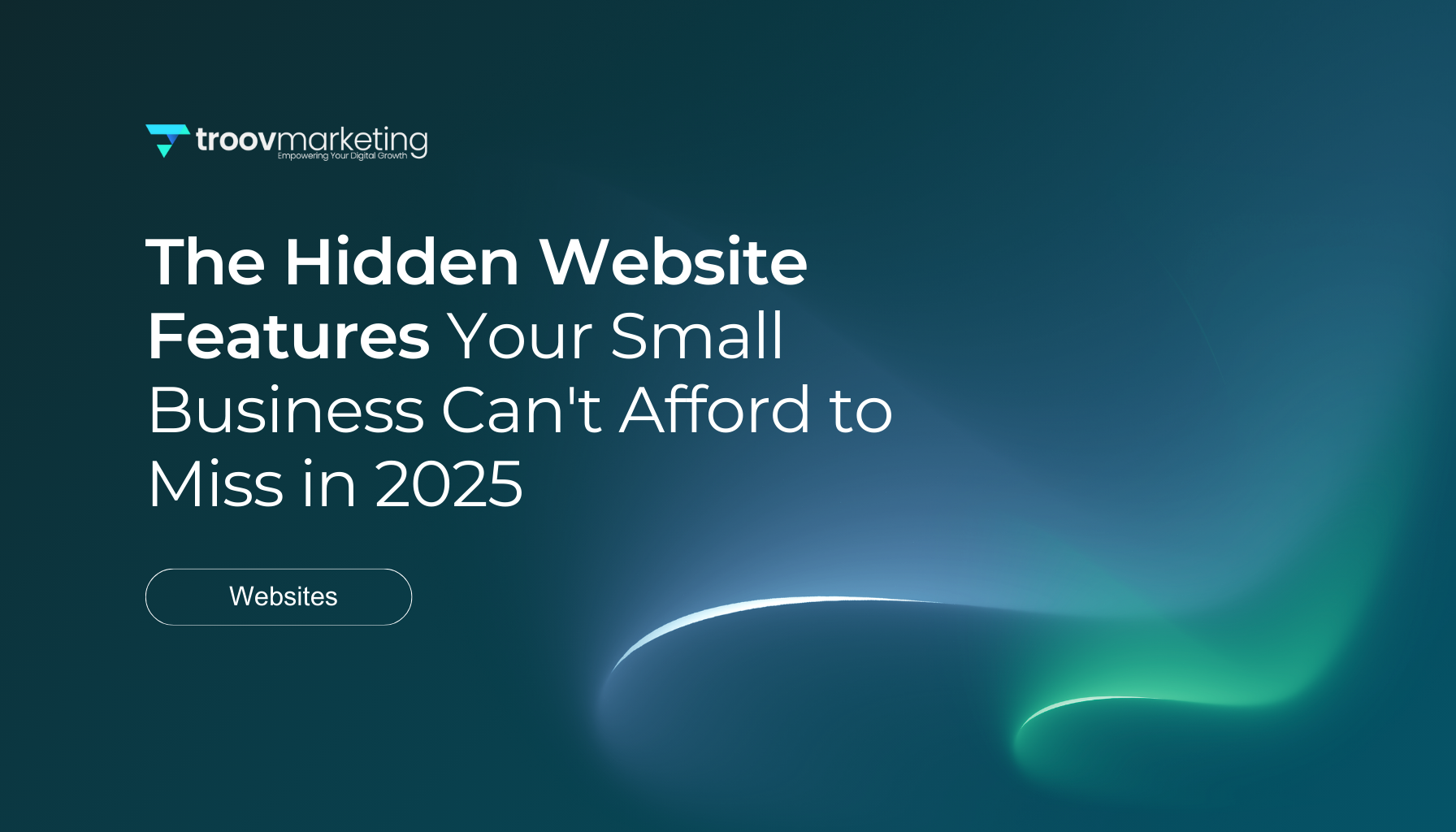Best Converting Landing Pages: What Small Businesses Get Wrong in 2025
Top performing landing pages convert at an impressive 6.6% rate on average. Entertainment pages achieve even better results with 12.3%. Most small businesses struggle to reach these measures because they make crucial mistakes that push potential customers away. Your site will lose 40% of visitors if loading time exceeds 3 seconds.
Success doesn't happen randomly when it comes to creating high-converting landing pages. Our work with small businesses has revealed several common mistakes that limit landing page's conversion potential. Mobile traffic now makes up more than half of all internet visits. Pages loaded with distractions can substantially affect your revenue.
Let's get into what makes converting landing pages work and understand why ecommerce pages achieve a 4.2% conversion rate compared to other sectors. On top of that, you'll learn to build a focused strategy that removes navigation distractions and creates a smooth path to conversion.
What is a high-converting landing page?
A high-converting landing page is different from a standard website page. The standalone web page turns visitors into leads or customers through a single, focused action. Regular website pages have multiple goals and navigation options, but a high-converting landing page dedicates 99% of its effort to one conversion objective—whether that's newsletter signups, purchases, or resource downloads.
Marketing professionals might call any webpage a landing page. The term specifically points to a first entry point designed with a clear conversion goal. These pages maximize the percentage of visitors who complete your desired action through careful optimization.
The best converting landing pages stand out because of their laser-focused approach. Well-designed pages apply proven principles that guide visitors smoothly from interest to action. This focused strategy brings clear business benefits: better customer acquisition through ads and faster revenue growth.
Setting realistic goals requires knowing what "good" performance means. A conversion rate of 10% or higher ranks as good in most industries. Context plays a big role here. Newsletter signup pages might need more than 5% conversion to succeed, while the same rate could be great for high-ticket product sales. Each industry and page purpose has its own standards of success.
Every high converting landing page includes these essential elements:
- Clear value proposition - Headlines must instantly show what you offer and why it matters, even to distracted visitors
- Benefit-led messaging - Show what your offering means for customers instead of listing features
- Single, dominant call-to-action - CTAs should pop visually and show users the next step
- Strategic design - Use visual signals that lead visitors logically toward conversion
- Social proof - Add testimonials, case studies, or reviews to build credibility
- Trust signals - Professional elements and recognizable badges address security concerns
These pages derive their persuasive power from structure. High-performing landing pages that convert follow psychological principles to meet visitor needs, handle objections, and create natural paths to action.
Simple pages convert better. Research links complex copy to lower conversion rates. Pages written at a 5th to 7th grade reading level show better results. Email leads other traffic channels with 19.3% conversion, while Instagram (17.9%) and Facebook (13%) follow behind.
Speed and mobile responsiveness matter just as much as design. Mobile devices bring five times more visitors than desktop, yet desktop converts 8% better. Smart businesses optimize for both platforms.
Performance metrics tell the true story of high-converting landing pages. The median landing page conversion rate sits at 6.6% across industries, while top performers reach double digits. Small, strategic changes often boost conversion rates significantly.
Well-executed landing pages become powerful tools that turn casual visitors into valuable leads and customers. Small businesses can't afford to ignore these essential marketing assets.
Average landing page conversion rates by industry
Setting realistic goals for your landing pages starts with knowing industry standards. Each sector shows different conversion rates that reflect how audiences behave and make purchases.
Ecommerce
Ecommerce landing pages show a median conversion rate of 4.2%, which sits below the 6.6% standard across all industries. This shows how hard it is to convince visitors to buy right away. Price makes a big difference in performance – items under $229 convert at 3-5%, mid-range products ($229-$1527) at 2-3%, and expensive items ($1528+) hover around 1%.
Some parts of ecommerce do better than others. Food and beverage pages hit about 7.1%, while fashion and beauty pages only reach 1.3%. The best ecommerce landing pages use between 285-930 words with 50-125 complex words to hit that 4.2% mark.
SaaS
Software-as-a-Service landing pages deal with special challenges. They have the lowest median conversion rate of any industry at 3.8%. Complex products, longer sales cycles, and visitors with mixed buying intentions create this lower rate.
Some reports tell a different story, with one showing SaaS conversion rates averaging 9.5%. This gap comes from different ways of measuring and defining conversions. Hardware-focused pages (4.1%) do slightly better than data and infrastructure solutions (3.3%). Simple, readable copy on SaaS pages converts 514% better than complex content.
Finance and Insurance
Financial services landing pages shine with an 8.3% median conversion rate, beating the all-industry median by a lot. Insurance pages lead the pack with an amazing 18.2% rate – that's 119% higher than the financial services median.
Investment pages struggle to keep up, managing just 3.9%. Credit and lending pages do well at 8.8%. Mobile traffic brings 27.8% better conversions than desktop for financial services – unlike most other industries.
Education
Education landing pages convert at 8.4%, beating the all-industry standard by 27%. Clear value offers and specific audience needs drive this success.
The education sector shows interesting patterns: online courses lead with 18.3%, while general course pages hit 13%. Higher education reaches 6.3%, and primary education and tutoring lag at 4.9%. Products with quick benefits tend to outperform those with long-term value.
Traffic source matters a lot here. Email campaigns get the best results at 14.1%, almost double the 7.3% from paid search.
Entertainment and Events
Entertainment and events pages are the conversion champions, hitting 12.3%. This comes from engaging content and simple conversion steps.
Sweepstakes pages stand out with a 47.5% median rate, and top performers reach an incredible 79.8%. Other areas vary: publishing converts at 9.8%, games and gambling at 8.1%, and streaming media at 6.8%.
These pages do so well partly because they ask for less – usually just an email or single click instead of complex forms or purchases. Their success shows how targeted offers can drive amazing results.
These standards help set goals and measure success in any industry. The best pages convert 2-3 times better than their industry median, showing room for improvement no matter where you start.
Core elements of landing pages that convert
The best landing pages share core elements that push visitors to take action. These components create a smooth path to conversion when you put them together the right way.
Clear and benefit-driven headline
Your headline can make your landing page succeed or fail. Visitors notice it first and decide whether to stay or leave. Good headlines show what people will get from your offer, not just product features. Research proves that simple benefit-focused headlines work better than creative ones 88% of the time. Headlines with positive benefits boost conversions by over 40% compared to questions or negative messages.
The best headlines use a simple formula: Benefit/Pain Point + How You Solve It + The Hook. Your headlines should be short, clear, and highlight what makes you unique. Simple beats clever every time—one study showed that changing a headline to focus on experience boosted sales by 30%.
Focused call to action (CTA)
CTAs power your landing page's conversion. The best CTAs are easy to spot and tell visitors exactly what will happen next. Action words like "Get," "Start," or "Join" boost clicks by a lot.
Your CTA button needs to pop with different colors and smart placement. Put CTAs where people naturally look, following F or Z reading patterns. Button-based CTAs get 45% more clicks than text links. Use words that show benefits instead of basic phrases like "Submit" or "Click Here".
Persuasive and simple copy
Landing page text must be both convincing and easy to read. Pages written at a 5th-7th grade level usually do better. Simple writing converts up to 514% better than complex content in some fields.
Make your copy easy to scan:
- Keep paragraphs short (2-4 sentences)
- Add bullet points to show key benefits
- Use white space to highlight important parts
- Make critical points bold to guide readers
Good copy shows benefits instead of features and answers "What's in it for me?". Your message should match your headline and CTA to work best.
Visual hierarchy and layout
Visual hierarchy guides how people see information on your page. Most visitors leave landing pages quickly, so smart placement helps them see what matters most.
People read in predictable patterns—usually F-shaped or Z-shaped. Put your most important content where eyes go first, starting at the top left.
Size, color, and contrast help create visual hierarchy. Bigger elements grab attention faster, and contrasting colors—especially red—show importance. The squint test helps check your hierarchy: if key elements stand out while squinting, you've done it right.
Social proof and trust signals
Social proof boosts conversion rates because people tend to follow what others do. About 91% of millennials trust online reviews as much as tips from friends and family. Adding testimonials can boost sales page conversions by 34%.
The best social proof includes:
- Customer stories with photos that people remember better
- Star ratings between 4.2-4.5 stars work best
- Client logos boosted conversions by 69% in one test
- Trust badges make people feel safe (61% quit buying when these are missing)
Social proof helps remove doubt when people buy. Without it, customers must decide alone—and they prefer choices others have already made successfully.
Common mistakes small businesses make in 2025
Small businesses make critical errors on their landing pages despite knowing conversion principles. These mistakes frustrate visitors and push potential customers away, which leads to lower conversion rates.
Too many CTAs or distractions
Adding multiple calls-to-action on a single landing page ranks among the worst mistakes. People freeze when they face too many choices and often end up making none. In fact, using just one CTA on your landing page can boost clicks by 371% and increase sales by 1,617%.
Your page's main goal becomes unclear with multiple competing CTAs. Even if you need secondary CTAs, make the hierarchy obvious. Give primary actions bold formatting while secondary options stay simple. Note that landing pages convert best with a single focus—trying to achieve multiple goals at once usually means achieving none.
Ignoring mobile optimization
Businesses in 2025 still overlook mobile optimization even though mobile devices drive over 60% of global website traffic. This poor mobile experience leads straight to lost revenue.
Mobile users quickly leave sites that create friction—40% abandon pages taking more than 3 seconds to load. Google's data shows that bounce rates jump by 123% on mobile as page load time grows from one to ten seconds.
Mobile optimization needs more than just speed. Pages should have easy-to-read text without zooming, buttons that work well with thumbs, and layouts that fit smaller screens. Great content fails when visitors struggle to use your page on their phones.
Overloading with information
Visitors resist pages packed with too much information. They leave quickly when they see walls of text, dense information blocks, or messy designs.
This happens when businesses try to please everyone, don't know their audience well enough, or rush through content creation. Extra information weakens your message and buries your CTA under needless content.
Keep your message clear and brief to avoid this issue. Pick information that directly supports your CTA. Your value proposition should fit in three sentences or less for the best results.
Weak or generic headlines
Unclear headlines fail to show immediate value, making visitors lose interest. Research proves that headlines focusing on specific benefits convert better than creative but vague ones.
Many small businesses use broad headlines like "Marketing Simplified!" instead of specific ones like "Increase Your Sales by 40% in 90 Days". The second option tells visitors exactly what they'll get and when, making it more effective.
Your headline should match your main offer. A landing page for a free trial needs a headline about that trial, not about other benefits like "affordable pricing".
Lack of trust-building elements
Visitors doubt your claims and offers without trust signals. This doubt kills conversions, especially from people who don't know your brand.
Good trust elements include:
- Customer testimonials showing ground validation
- Case studies proving real results
- Trust badges and security seals near forms or CTAs
- Clear contact information and support options
- Money-back guarantees or free trials to lower perceived risk
Trust signals make your landing page more convincing. Pages without these elements lack the human touch and real experiences that build visitor confidence. Today's digital world has made skeptical consumers the norm, so these elements are essential for best converting landing pages.
Best practices for improving landing page conversion
Random changes won't help you turn a poor-performing landing page into a success story. You need systematic optimization. Research and testing show these proven strategies can boost your conversion rates by a lot.
Use A/B testing to refine elements
A/B testing removes guesswork by comparing two page versions to find the better performer. Your visitors split between two versions lets you measure real performance differences. Here's how to run effective tests:
- Test one variable at a time to see clear results
- Work on elements that make the biggest difference like headlines, CTAs, images, or form fields
- Give tests enough time based on your traffic volume
- Look beyond clicks and track meaningful conversions, bounce rates, and time on page
This method turns opinions into informed decisions and changes discussions from "we think" to "we know". Small improvements add up over time, and brands that keep testing achieve the highest conversion rates.
Reduce form fields to lower friction
Form optimization can dramatically improve conversions. HubSpot's largest longitudinal study of over 40,000 landing pages shows a clear trend: more form fields lead to fewer conversions. Cutting fields down to four or fewer can lift conversions by 160%, while going from four to three fields might boost them another 50%.
Best results come from using 3-5 essential fields. B2B marketers should stick to three simple fields: name, email, and job title. Adding phone number fields can drop conversion rates by 5%.
Match ad copy with landing page content
Ads and landing pages need continuous connection to build trust and reduce friction. Message mismatches confuse visitors who leave quickly—wasting your ad budget and hurting credibility.
Keep these elements consistent:
- Headlines that deliver your ad's promise
- CTAs using similar language and value proposition
- Visual elements that flow with the design
This unified approach boosts conversion rates because visitors immediately find what they expect.
Use urgency and lack wisely
Urgency triggers powerful psychological responses that speed up decisions. When done right, it gives people solid reasons to act now instead of later.
These urgency tactics work well:
- Countdown timers for limited time offers (but make sure they really expire)
- Quantity indicators that create FOMO
- Benefit-focused copy with phrases like "last chance" or "limited supply"
- Visual elements that emphasize scarcity
Complex purchases often need temporary deals to push people toward conversion. Just keep it real—fake urgency breaks trust.
These strategies, when applied systematically, help create landing pages that convert nowhere near industry averages.
Real examples of high converting landing pages
Success stories demonstrate landing page principles at work.
Promo – Video and CTA above the fold
Promo reached a 46.94% conversion rate by placing engaging video content above the fold. Their strategy shows how emotional storytelling through video drives action by a lot. The landing page showcases dynamic header video with clear value proposition text overlay and an eye-catching CTA button in the first fold. Research shows videos can increase conversions by up to 80%.
edX – Clear benefits and short copy
edX's education landing page achieved a 52.68% conversion rate that shows the power of simplicity. Their page presents crystal-clear benefits through bullet points instead of lengthy explanations. Josh Grossman, Senior Growth Marketer at edX, says "In our testing, shorter copy worked better than longer copy. Either you want to learn Python, or you don't". Their clean layout and minimal text help visitors focus on value.
Twillory – Mobile-first design
Twillory's clothing industry landing page hit a 46.85% conversion rate by putting mobile users first. Twillory created custom experiences for mobile visitors instead of adapting desktop pages. Their desktop version showcases engaging GIFs and videos, while the mobile experience delivers optimized content for fast loading times. This strategy recognizes mobile traffic's dominance in internet usage.
ClaimCompass – Layered CTAs and education
ClaimCompass reached a 30.02% conversion rate in the competitive legal sector through strategic information layering. Their landing page places multiple CTAs throughout the scroll path. They understand different visitors need varying amounts of information before converting. A prominent CTA appears above the fold for immediate converters, while additional sections educate visitors about flight compensation processes.
Conclusion
Landing pages are powerful yet underused tools in a small business's digital toolkit. This piece shows how top-performing landing pages achieve remarkable results—from 6.6% average across industries to 12.3% in entertainment sectors.
These results don't happen by chance. They come from careful implementation of core conversion principles: benefit-driven headlines, focused CTAs, simple yet persuasive copy, strategic visual hierarchy, and compelling social proof. These elements work naturally together to guide visitors toward your desired action.
Small businesses should watch out for critical mistakes in 2025. Multiple CTAs can reduce conversions drastically, while poor mobile optimization costs you more than half your potential customers. Information overload, weak headlines, and missing trust signals push prospects away quickly.
Different industries show varying results. Financial services pages convert at 8.3%, education at 8.4%, and ecommerce at 4.2%. These measurements give you realistic targets to improve.
The best strategy combines systematic testing with proven methods. A/B testing removes guesswork. Fewer form fields cut friction. Message arrangement builds trust. Strategic urgency speeds up decisions. These practices work together to turn underperforming pages into conversion powerhouses.
Real-life examples prove these aren't just theories. Promo's 46.94% conversion rate and edX's impressive 52.68% show measurable results with proper execution.
Your landing pages are vital conversion points where interested prospects become valuable leads or customers. Page optimization offers one of the highest-ROI activities for your business. Small improvements add up over time and can double or triple your conversion rates compared to industry averages.
Minor changes often create big results. Start with the basics: simplify your message, focus on one CTA, make pages mobile-responsive, and add strong trust signals. These simple adjustments often boost performance without needing many resources.
Creating high-converting landing pages doesn't need technical expertise or big budgets. You just need to understand visitor psychology, apply proven principles, and commit to constant improvement. The strategies in this piece will help your small business capture more value from every marketing dollar spent.
Key Takeaways
Small businesses can dramatically improve their landing page performance by avoiding common pitfalls and implementing proven conversion strategies that top performers use to achieve rates above industry averages.
• Focus on one clear action: Landing pages with a single CTA can increase clicks by 371% and sales by 1,617% compared to pages with multiple competing calls-to-action.
• Prioritize mobile optimization: With 60% of traffic coming from mobile devices, pages must load in under 3 seconds and provide thumb-friendly navigation to prevent the 40% bounce rate.
• Keep copy simple and benefit-focused: Pages written at 5th-7th grade reading level convert up to 514% better than complex content, with clear headlines outperforming creative ones 88% of the time.
• Reduce form friction strategically: Limiting forms to 3-4 essential fields can increase conversions by 160%, as each additional field creates barriers to completion.
• Test systematically, not randomly: A/B testing one element at a time transforms guesswork into data-driven decisions that compound into significant performance improvements over time.
The gap between average (6.6%) and exceptional (12%+) conversion rates often comes down to execution of these fundamentals rather than complex technical solutions.
FAQs
Q1. What is the average conversion rate for landing pages across industries? The average conversion rate for landing pages across industries is 6.6%. However, this can vary significantly depending on the specific sector, with entertainment pages reaching as high as 12.3% and ecommerce pages averaging around 4.2%.
Q2. How can I improve my landing page's conversion rate? To improve your landing page's conversion rate, focus on creating a clear and benefit-driven headline, use a single focused call-to-action (CTA), keep your copy simple and persuasive, implement a strong visual hierarchy, and include social proof and trust signals. Additionally, ensure your page is mobile-optimized and conduct A/B testing to refine elements.
Q3. What are some common mistakes small businesses make with their landing pages? Common mistakes include having too many CTAs or distractions, ignoring mobile optimization, overloading the page with information, using weak or generic headlines, and lacking trust-building elements. These errors can significantly reduce conversion rates and drive potential customers away.
Q4. How important is mobile optimization for landing pages? Mobile optimization is crucial, as over 60% of global website traffic comes from mobile devices. A poor mobile experience can lead to high bounce rates, with 40% of visitors leaving if a page takes more than 3 seconds to load. Ensuring your landing page is mobile-friendly can significantly impact your conversion rates.
Q5. What role does A/B testing play in improving landing page performance? A/B testing is essential for refining landing page elements and improving conversion rates. It allows you to compare two versions of a page to determine which performs better, eliminating guesswork and enabling data-driven decisions. By consistently testing and iterating, you can achieve significant improvements in your landing page's performance over time.
